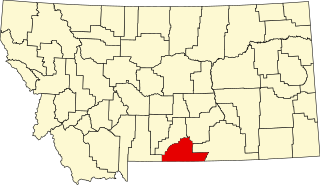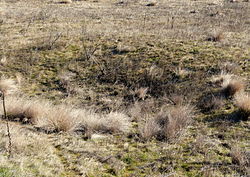
The Sunken Village Archeological Site, designated by the Smithsonian trinomial 35MU4, is an archaeological site on Sauvie Island in Multnomah County, Oregon, United States. The site consists of a remarkably well-preserved Chinookan village, dating back more than 700 years. It is a major example of a wet archaeological site, in which cultural materials were preserved in an anaerobic freshwater environment. Finds at the site include well-preserved basketry. The site was declared a National Historic Landmark in 1989.

This is a list of the National Register of Historic Places listings in Carbon County, Montana.
The Weston Canyon Rock Shelter, located in Franklin County, Idaho in the vicinity of Weston, Idaho is a historic site listed on the National Register of Historic Places in 1974.
The High Point Shell Midden is a prehistoric archeological site located in Samuel H. Boardman State Scenic Corridor near Carpenterville, Oregon, United States. The midden is located on a strategic high point overlooking the Pacific coast, and is visible in the eroding cliff face. Radiocarbon dating indicates that the site was occupied c. 1070 CE and again c. 1385 CE, but additional dating may extend this chronology. Although shell deposits are evident without excavation, it is likely that evidence of other activities related to site occupation may be found on the periphery of the midden. The site has potential to produce scientific data related to several topics, including "site formation processes, landscape evolution, and changes in settlement, subsistence, technology, and society among the Native American cultures of the Oregon Coast."
The Tahkenitch Landing Site is a prehistoric archeological site located in Oregon Dunes National Recreation Area near Gardiner, Oregon, United States. Stratified remains up to 2 meters deep show the site has served various functions including shell midden and probably village over a history spanning 7000 to 8000 years, up to as late as 1858 CE. It also bears evidence of dramatic environmental changes including estuarine development, dune formation, and a transition from estuarine to lacustrine habitats. It was the first site on the Oregon coast to yield cultural remains older than about 3000 BP, and as such is one of the most significant sites on the Pacific coast of Oregon and North America.






